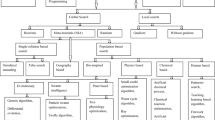Abstract
Hull geometry modification and reconstruction, optimization algorithms and CFD technique are combined together into what is known as simulation-based design (SBD) techniques, and its essence is the hydrodynamic configuration design driven by global flow optimization. The purpose of this paper is to show how the improvement in the hydrodynamics performance of a Small Waterplane Area Twin Hull (SWATH) can be obtained by solving a shape optimization design problem at different speeds using the SBD technique. In this paper, an example of the technique application for the SWATH hull-form optimization at different speeds is demonstrated. In the procedure, the free-form deformation method is chosen to automatically modify the geometry of submerged pontoon, and the multi-objective particle swarm optimization (MOPSO) algorithm is adopted for exploring the design space. The two objectives functions, the total resistance at two different speeds (11 kn and 15 kn), are assessed by RANS solvers. The optimization results show that the decrease in total resistance is significant for the optimization case at two different speeds (11 kn and 15 kn), with a reduction of about 5.1% and 6.3%, respectively. Meanwhile, the displacement increases 3.7% and the transverse section of submerged pontoon becomes “flower vase” type from ellipse. Finally, dedicated experimental campaigns for optimized model have been carried out to validate the computations and establish the effects of the optimization processes. It shows that the computations of optimization scheme mainly fit the results of model test. The given, practical examples demonstrate the practicability and superiority of the proposed SBD technique for the SWATH multiple speed integrated optimization problem. In addition, the technique can also be applied to other fields of shape optimization design.












Similar content being viewed by others
References
Campana EF, Peri D, Tahara Y et al (2009) Numerical optimization methods for ship hydrodynamic design. In: SNAME annual meeting, Rhode Island, USA, 2009
Li SZ (2012) Research on hull form design optimization based on SBD technique. Doctoral Thesis, China Ship Scientific Research Center, Wuxi, China
Yang C, Huang F (2016) An overview of simulation-based hydrodynamic design of ship hull forms. J Hydrodyn 28(6):947–960
Han S, Lee YS, Choi YB (2012) Hydrodynamic hull form optimization using parametric models. J Mar Sci Technol 21(1):129–144
Kim HJ, Chun HH (2008) Optimizing using parametric modification functions and global optimization methods. In: 27th Symposium on naval hydrodynamics, Seoul, Korea, 2008
Kim H, Yang C, Chun HH (2010) A combined local and global hull form modification on approach for hydrodynamic optimization. In: 28th Symposium on naval hydrodynamics, Pasadena, California, 2010
Li SZ, Zhao F, Ni QJ (2014) Bow and stern shape integrated optimization for a full ship by SBD technique. J Ship Res 58(2):83–96
Pellegrini R, Serani A, Leotardi C, Iemma U, Campana EF, Diez M (2017) Formulation and parameter selection of multi-objective deterministic particle swarm for simulation-based optimization. Appl Soft Comput J 58:714–731
Yang L, Li SZ, Zhao F, Ni QJ (2018) An integrated optimization design of a fishing ship hullform at different speeds. J Hydrodyn 30(6):1174–1181
Shi WQ, Yu XZ (2012) The development and future trend of foreign SWATH ships. Ship Sci Technol 34(2):4–19
Zhong K, Zhang PY, Zheng M (2012) SWATH vessels development and future in Germany. Ship Sci Technol 34(2):20–34
Tahara Y, Peri D, Campana EF, Stern F (2008) Single and multiobjective design optimization of a fast multihull ship: numerical and experimental results. In: 27th Symposium on naval hydrodynamics, Seoul, Korea, 2008
Brizzolara S, Curtin T, Bovio M, Vernengo G (2012) Concept design and hydrodynamic optimization of an innovative SWATH USV by CFD methods. Ocean Dyn 62:227–237
Diez M, Campana EF, Stern F (2015) Design-space dimensionality reduction in shape optimization by Karhunen–Loève expansion. Comput Methods Appl Mech Eng 283:1525–1544
Pellegrini R, Serani A, Broglia R, Diez M (2018) Resistance and payload optimization of a sea vehicle by adaptive multi-fidelity metamodeling. In: 2018 AIAA/ASCE/AHS/ASC structures, structural dynamics, and materials conference, Kissimmee, Florida, 2018
Li SZ, Zhao F, Ni QJ (2013) Multi-objective optimization for ship hull form design using SBD technique. Comput Model Eng Sci 92(2):123–149
Kennedy J, Eberhart RC (1995) Particle swarm optimization. In: Proceedings of the IEEE international conference on neural networks, 1995, IV, 1942–1948. IEEE Service Center, Piscataway
Sederberg TW, Parry SR (1986) Free-form deformation of solid geometric models. SIGGRAPH’86 20(4):151–159
Peri D, Campana EF (2008) Variable fidelity and surrogate modeling in simulation-based design. In: 27th ONR Symposium on naval hydrodynamics, Seoul, Korea, 2008
Wu CS, Yang L, Zhang ZR, Zhao F, Yan K (2010) CFD simulation of ship model free to sinkage and trim advancing in calm water. In: Proceedings of Gothenburg 2010: a workshop on numerical ship hydrodynamics, Gothenburg, pp 435–440
Acknowledgements
This work has been supported by the National Natural Science Foundation of China, Grant no. 51479181.
Author information
Authors and Affiliations
Corresponding authors
Additional information
Publisher's Note
Springer Nature remains neutral with regard to jurisdictional claims in published maps and institutional affiliations.
About this article
Cite this article
Ni, Q., Ruan, W., Li, S. et al. Multiple speed integrated optimization design for a SWATH using SBD technique. J Mar Sci Technol 25, 185–195 (2020). https://doi.org/10.1007/s00773-019-00640-5
Received:
Accepted:
Published:
Issue Date:
DOI: https://doi.org/10.1007/s00773-019-00640-5




